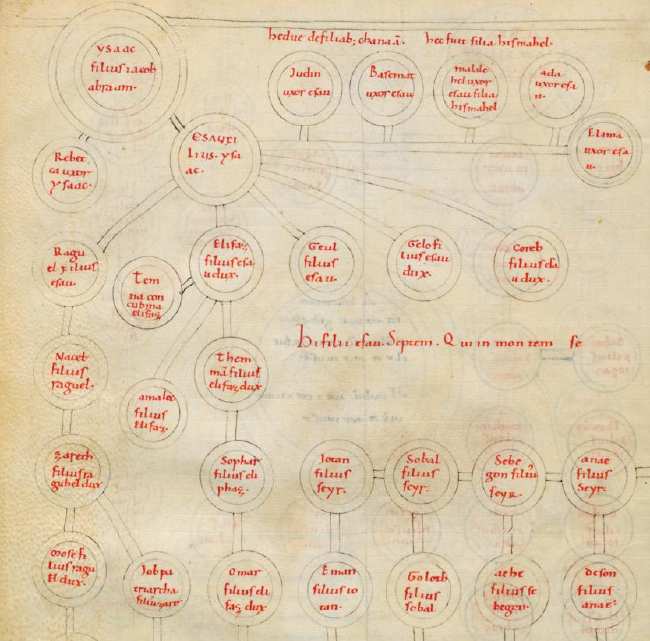An important new interpretation has just appeared, resolving longstanding questions about the puzzling biblical genealogies that appear mainly in several 10th-century Spanish manuscripts of Beatus of Liebana’s commentary on the Apocalypse (like the Morgan Beatus). Jean-Baptiste Piggin, approaching the whole question of this corpus of genealogies from an interest in informational graphics, has tabulated and linked to online versions, when available, of all the manuscripts, and he has collated the texts of the principal recensions. The recension closest to the original (and lost intermediate versions) is a very plain eleventh-century copy in the Biblioteca Medicea Laurenziana. The whole thing is available online (Cosimo de’ Medici would be proud! — here is a link to the first page). Here is Esau’s family:

Alone among the scholars who have studied these manuscripts, Mr. Piggin has now convincingly shown the whole to derive from a long scroll of Late-Antique origin, perhaps 4th or early 5th century! His work has been presented at the Oxford Patristics conference, and is more fully explored in a series of amazing essay-pages on his website. Most interesting of all is that he offers a dynamically zoom- & scrollable version of a tentatively reconstructed archetype, as well as the Bibl. Medicea Laurenziana witness. This is ‘medieval genealogy’ — the exploration of genealogy as it was used and understood during the middle ages — at its finest.

Post a Comment